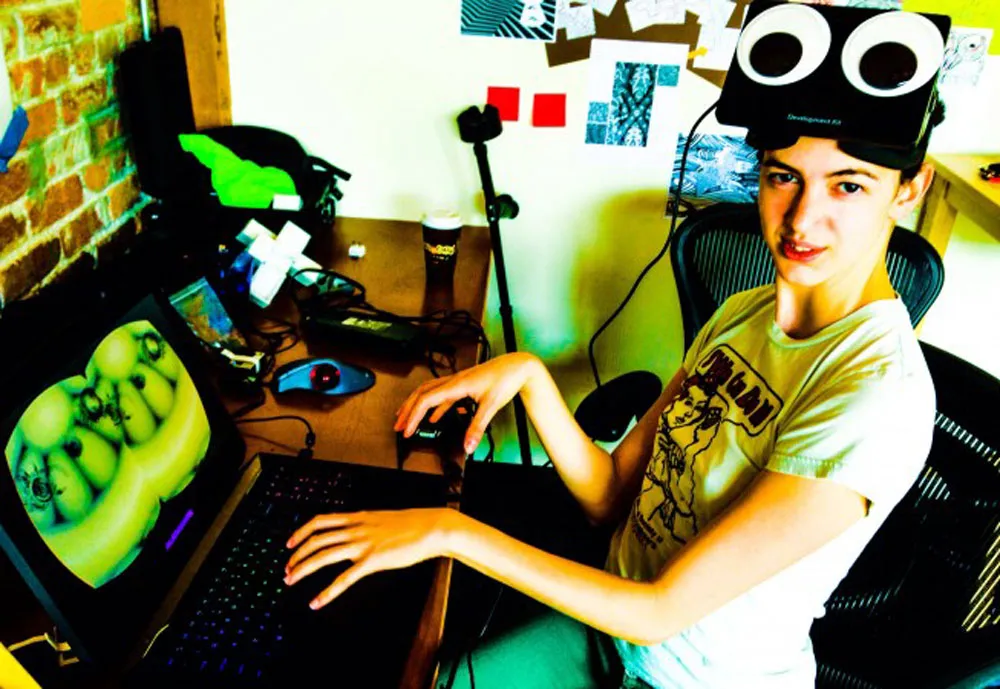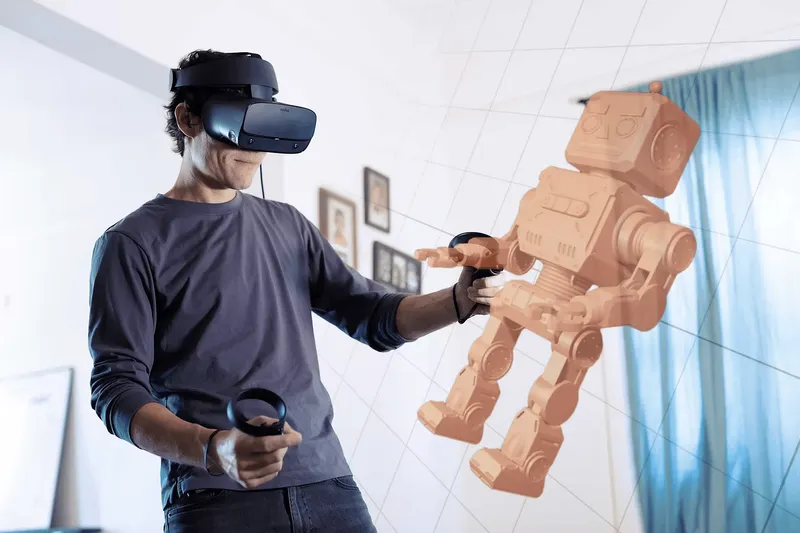Vi Hart is known to many as a “mathemusician,” with over 800,000 subscribers on her YouTube page. Her videos have helped educate millions about advanced mathematical concepts in a fun and easy to understand way. Recently however, Vi joined a virtual reality research group, eleVR, to help explore the boundaries of the medium. The initiative will also look share all of their results with the VR community in an effort to help the community grow. Vi looks to bring her unique educational sensibilities as well as her mathematical prowess (she is also a resident expert on Khan Academy) to the project.
One thing that Vi is particularly passionate about is the emergence of WebVR, which she believes will change the way we browse the Internet. I had a chance to catch up with Vi on the subject at GDC, below is the full transcript of our conversation.
Will: So, what do you see as the timeline for more of a massive option for web VR? How close are we to the real thing?
Vi: A lot of it is going to depend on several major companies, whether they come together to support stuff in the browser. So Mozilla and the Chromium teams have been really committed to completely supporting web VR. I think, right now VR support is in the Firefox nightly build, which is what eventually becomes Firefox, so it think we can look forward soon to being able to work with this stuff. And if everybody can work with it on an open source platform, it’s going to happen really quickly, but it is unfortunate that a lot of that depends on are these major companies making browsers and if they don’t support something, it’s going to die. And if they do support something, it’s going to happen fast, and it looks right now like they’re going to support it and its going to happen fast.
Okay, with web VR is it something accessible to a regular web developer? Or is it something that you need to really know unity and stuff for?
It’s surprisingly easy. There’s this great framework using Three.js that the Mozilla team has a thing on Github, so it’s easy to just get in there and start modifying and playing with it, and you can make things really easily and really fast if you know a little JavaScript and a tiny bit familiar with Three.js. The documentation for this stuff is really good, I mean you Google anything you want to know what do, you get some documentation, you’re going to get something similar. It’s so easy to play around, and with this stuff you don’t even need a VR headset to start playing around because the browser will show it in 3d if you don’t have the headset. If you plug in the headset, I will show it in 3d in the headset, so it’s really easy to play around. Everyone should do it.
What do you see as a major advantage of moving a site into VR as opposed to a flat site you’re used to?
Well, you can do both. So it’s not like when you move into VR when you have a headset plugged in, you’re excluding having your normal website normally, but it’s so cool to visit a website and be in a place. When you visit our virtual version of our website and you’re looking at our office, you click on our different projects, looking around our office, oh I see on your desk, you’re working on this thing. It’s just so cool. It’s awesome. It makes your website feel like a website, like it’s yours, you’re actually somewhere. It’s so much more personal.
What are your best experiences in sites that you’ve seen sites built so far in the experimentation stages?
For web VR, Mozilla’s mozVR.com is they’re pushing this stuff forward. We’ve been doing a lot of stuff. It’s all kind of new, so I feel like my team has been doing half the stuff that’s out there. There’s not a lot out there right now, but it’s not that hard to do, so I’m hoping we’re going to see a lot more very soon.
What’s the major challenge that you guys are still trying to get over right now?
Better hardware, hopefully coming soon, would be nice. A lot of the stuff is inconsistent and buggy, there’s things to be worked out, things will crash, build updates and some little thing broke. Hopefully things will stabilize a lot more soon and things will stabilize. Like right now is that last little bit before things start really going consumer, at the end of this year, I think we’re going to see a big push to consumer and things are going to start being stable. So, but right now those little bugs, like, oh, today it turns out I had this weird little app is installed, and then try to start up this other app while my headset is plugged in, everything crashes. It’s all these tiny little bugs that are so annoying, and are going to be ironed out. Not all, but you know.
Yeah, that’ll take time. So, if you had to make a prediction, when do you see a large number of major websites hopping into VR? What’s the timeline for that?
Based on the fact major companies are hopping into VR right now, already we have look at cars in VR experience from whatever major car company, visit whatever experience from whatever movie. You can see how eager companies are to jump into this stuff, so we’re going to see major companies websites having VR versions as soon as there are web developers capable of making them.
And when will that be?
As soon as people decide to do it! People just need to know you can, they just need to know how easy it is, and it’s easy. People are going to figure out that they can do it, and then they’ll just do it. It’s JavaScript, it’s so easy!
So what is the best way that we can get the word out to have people get excited about web VR? What is your tag line?
I mean, if you try it you’re going to be sold. The more people demo things, the more they’re going to be sold. We just need some good examples, for people to try it, and they’ll be sold. VR sells itself. Once more people have headsets and more people have opportunities to try the headsets, you don’t need to do anything else.
——-
You can follow Vi Hart on Twitter and Youtube. You can also follow all of her, and eleVR’s research on their blog.




























